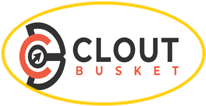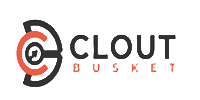Unlock the Power of Search Engine Marketing: A Comprehensive Guide
Search Engine Marketing (SEM) is a digital marketing strategy used to increase the visibility of a website in search engine results pages (SERPs). It involves promoting websites by increasing their visibility in search engine results through paid advertising as well as through organic (unpaid) search efforts. SEM primarily focuses on paid efforts, with the goal of driving more traffic, leads, and conversions.
Key Components of SEM:
1.Paid Search Advertising: SEM usually refers to pay-per-click (PPC) advertising, where businesses bid on keywords and pay for each click on their ads.
Ads are displayed on search engine results pages (usually above or below the organic results) when users search for specific keywords.
The most common platform for paid search advertising is Google Ads, but it also includes Bing Ads and other search engines.
2.Keywords: Keyword research is essential in SEM. The goal is to bid on the most relevant keywords that potential customers are searching for.
Choosing the right keywords involves understanding the intent behind user searches and balancing competition for those keywords with your budget.
3.Ad Auction & Ranking: In SEM, ad placement is determined by a real-time auction process. Factors like bid amount, quality score (which includes ad relevance, click-through rate, and landing page experience), and ad extensions can influence an ad’s rank.
4.Quality Score: Search engines like Google assign a quality score to ads, which helps to determine ad ranking. A higher quality score means lower costs and better positions for ads.
5.Ad Copy & Extensions: Effective ad copy is crucial to attract clicks. Ads need to be clear, relevant, and aligned with the keywords targeted.
Ad extensions (such as sitelinks, call buttons, location info) are additional features that can improve the performance and visibility of an ad.
6.Landing Pages: SEM campaigns often direct users to landing pages—optimized web pages specifically designed to encourage a certain action (such as a purchase or sign-up).
These pages should be relevant to the ad and provide a seamless experience to increase conversions.
7.Tracking & Analytics: Conversion tracking and analytics are key for evaluating the performance of SEM campaigns. Metrics like click-through rate (CTR), cost-per-click (CPC), and return on ad spend (ROAS) help measure success and adjust strategy accordingly.
SEM vs. SEO:
While Search Engine Optimization (SEO) focuses on increasing a website’s organic visibility through optimizing content and website structure, SEM focuses on paid search efforts to drive traffic immediately.
Benefits of SEM:
- Instant results: Unlike SEO, which can take time to see results, SEM offers immediate visibility once ads go live.
- Targeted audience: Advertisers can specifically target users searching for related products/services.
- Measurable results: SEM allows for easy tracking and measuring of performance.
- Common Platforms:
- Google Ads: The largest SEM platform, offering various ad types (text, display, video).
- Microsoft Advertising (Bing Ads) : Often used as a complementary platform to Google Ads.
SEM is a critical tool in digital marketing to reach potential customers at the right time, right place, and with the right message.
Types Of Search Engine Marketing
Search Engine Marketing (SEM) encompasses various techniques, but it is mainly categorized into two key types: Paid Search Advertising and Organic Search Marketing. Although SEM traditionally focuses on paid efforts, organic strategies are still part of the broader search marketing landscape. Here’s a breakdown:
Paid Search Advertising (PSA): Paid search advertising is the primary type of SEM, and it involves paying for ads to appear in search engine results for specific keywords.
Here are the main forms of paid search marketing:
Pay-Per-Click (PPC) Advertising: Advertisers bid on keywords that are relevant to their business. They pay when users click on their ad.
Ads typically appear at the top or bottom of search engine results pages (SERPs), often labeled as “Ads” or “Sponsored.
Platforms: Google Ads, Bing Ads, Yahoo Search Ads
Cost-Per-Impression (CPM): Instead of paying per click, advertisers pay based on how many times their ad is shown (per 1,000 impressions).
This is often used in display advertising or brand awareness campaigns rather than search.
Shopping Ads (Product Listing Ads): These ads are typically used by e-commerce businesses and appear with product images, prices, and details in search results.
Platforms: Google Shopping, Bing Shopping.
Remarketing/Retargeting: Retargeting allows businesses to show ads to users who have previously visited their website or engaged with their content.
This method helps bring back potential customers who may have left the website without converting.
Local Search Ads: Local search ads focus on local businesses, with the ads appearing on services like Google Maps or in “near me” searches.
They can include business information like location, hours, and contact info.
Organic Search Marketing (SEO): Though SEO (Search Engine Optimization) is not a paid form of SEM, it’s often discussed within the same context as it focuses on improving a website’s visibility in organic (unpaid) search results. The two strategies often complement each other.
Here are the main forms of SEO:
On-Page SEO: Focuses on optimizing individual web pages to rank higher in search results.
It includes elements like keyword usage, meta tags, content quality, images, URLs, and user experience (UX).
Off-Page SEO: Deals with actions taken outside the website to improve its search ranking.
The most important aspect of off-page SEO is link building (gaining backlinks from other reputable websites).
Technical SEO: Focuses on optimizing the backend of your website, such as improving site speed, mobile-friendliness, and ensuring the website is crawlable and indexable by search engines.
Local SEO: Focuses on increasing visibility for local businesses.
It involves optimizing for “near me” searches and improving business profiles on platforms like Google Business Profile (formerly Google My Business).
Display Advertising: While not directly related to search, display ads are often included in SEM campaigns. These ads appear on other websites as banners or sidebars and are used to drive traffic to a website.
Often these ads are served through Google’s Display Network or other ad networks.
Video Search Ads: These ads appear as video content in search engine results or on video platforms like YouTube.
Platforms like Google Ads allow businesses to run video campaigns on YouTube and have them appear as suggestions on search engine results.
App Promotion Ads: These ads are designed specifically to promote mobile apps. They appear on search results when users look for apps or related keywords.
Platforms like Google Ads help promote apps on Google Play, Google Search, and the Display Network.
Voice Search Marketing: As voice-activated searches (via virtual assistants like Siri, Google Assistant, or Alexa) grow in popularity, optimizing for voice search is becoming increasingly important.
Voice search results often provide direct answers, making ranking in the top position (position zero) more critical
Social Media Advertising (Complementary to SEM): Many SEM strategies also include advertising on social media platforms like Facebook, Instagram, LinkedIn, or Twitter.
These platforms offer paid advertising to complement search ads by targeting users based on interests, demographics, and behavior.
Summary:
Paid Search Advertising (PPC):
- Pay-per-click (PPC) advertising
- Cost-per-impression (CPM)
- Shopping Ads
- Retargeting
- Local Search Ads
- Organic Search Marketing (SEO):
- On-page SEO
- Off-page SEO
- Technical SEO
- Local SEO
- Complementary Forms:
- Display advertising
- Video search ads
- App promotion ads
- Voice search marketing
- Social media advertising
Each type of SEM strategy serves different goals, from brand awareness and traffic generation to direct sales and lead acquisition. Many businesses use a combination of these approaches to maximize their online presence.




